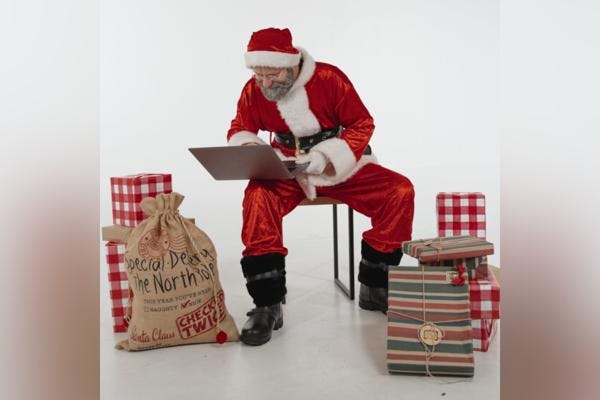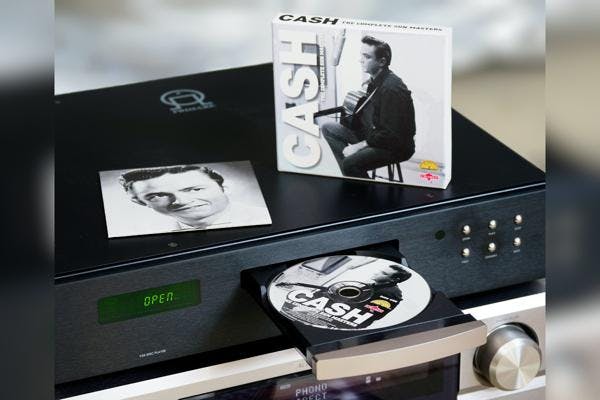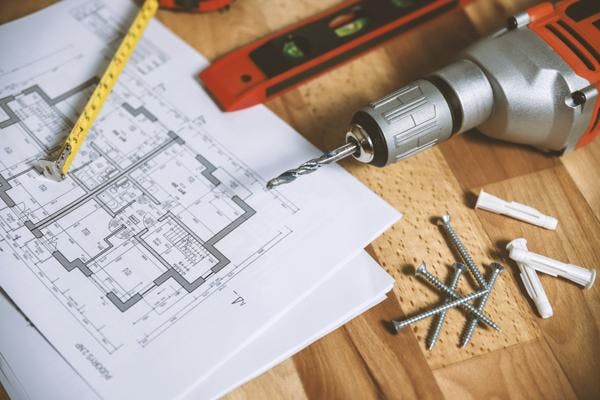
Unleashing the Value: Pawning Snap-on Tools at Pawn Shops
Many pawn shops pay top dollar for good condition tools and equipment.

Most jewelry pawn shops accept all forms of silver and can make cash offers on the same day. Silver and gold are some of the earliest forms of money in recorded history. Humans have used silver as a means of storing value for thousands of years. Today, most pawn shops will happily buy and sell silver in exchange for cash.
Silver is a commodity, and in its pure form, it fetches a price determined by global financial markets. Silver is traded in all major financial markets around the world: London, New York, Dubai, Hong Kong, Shanghai, etc. Silver in one country always has value in another country.
Since silver markets are liquid and have transparent pricing, most pawnbrokers are able to quickly determine the value of the silver you want to sell. In this post, we will walk you through how pawn shops value silver in its various forms.
Be sure to check out our pawn shop silver value estimator below, and contact us if you have any questions.
We created the tool below to help you estimate the amount that a pawn shop will value your silver. Pawn shops typically pay 60% to 90% of silver’s fair market value - so first we need to get the market value of the silver, then we estimate the silver shop valuation. The formula for the amount a pawn shop will pay for silver is as follows:
Item Weight x Silver Purity % x Pawnbroker offer %
troy ouncesrather than standard
ounces. One troy ounce weighs 31.1 grams, while one regular ounce weighs 28.35 grams.
Our tool pulls live silver prices from global markets so you have an accurate reading of the current silver price.
Silver comes in various forms. The type and form of your silver will determine its worth and value. Below are the most common forms of silver.
Silver jewelry is often in the form of bracelets, earrings, necklaces, watches, rings, and pendants.
Silver jewelry value is determined by three factors:
Silver jewelry value is worth at minimum its weight in silver because it can always be melted down into pure silver. Some designs and brands command large premiums above the weight in silver.
Silver coins are minted by various entities like the US Mint. Silver coins usually are worth at minimum their weight in silver. Many silver coins are rare and command premiums above the weight in silver.
Silver coins must be 999 (99.9%) to be considered fine silver.
The purity of silver coins does not vary as much as the purity of gold varies in gold coins.
Silver bullion (also called silver bars) is often used to store large quantities of silver. Central banks and financial institutions store large silver bars in vaults. The large silver bars stored by banks weigh 400oz (12 kg / 27 lbs). Smaller silver bars starting at 1oz are available for retail buyers. Silver bullion is valued at its weight in silver.
Scrap silver is a term used to describe any silver item that is no longer wanted or needed and is being sold for its metal content. This includes jewelry, coins, silverware, flatware, cutlery, tea sets, trays, and any other item made of silver. Scrap silver can be found in many places, including pawn shops, antique stores, and online auctions.
When selling scrap silver, it is important to know the value of the item. Silver is priced according to its weight and purity. Silver is usually marked with a purity mark, such as .925 or .999, which indicates the percentage of silver in the item. Scrap silver is also priced according to the current spot price of silver, which can fluctuate daily.
Sterling silverware is a type of silverware that is made of a metal alloy that is 92.5% silver and 7.5% other metals. Sterling silverware is highly valued and is often used for special occasions. It is typically more expensive than other types of silverware due to its higher silver content.
Sterling silverware is usually decorated with intricate designs and is often engraved with a family crest or initials. It is often used for formal dinners and special occasions and is a sign of luxury and sophistication. Sterling silverware is highly durable and can last for generations if it is cared for properly. It is also a great way to add a touch of elegance to any table setting.
A full sterling silverware set often can sell for $8,000 to $10,000 depending on the brand, condition, and silver content. Pawn shops often pay $4,000 to $7,000 for good-quality silverware sets. Antique silverware sets from the 18th and 19th centuries can sell for even more.
Silver leaf is a thin sheet of metal made from pure silver. It is used in art, craft, and decoration. Silver leaf is also known as gold leaf because it is often used to imitate gold. Silver leaf is very thin, measuring only 0.1 to 0.2 microns thick. It is so thin that it is almost transparent and can be used to create a metallic sheen on a variety of surfaces. Silver leaf is often used to gild or decorate items such as picture frames, furniture, sculptures, and other objects.
Silver leaf is available in a variety of forms, including loose leaf, transfer leaf, and patent leaf. Loose leaf is the most common form and is sold in booklets of 25 or more leaves. Transfer leaf is a sheet of paper with silver leaf adhered to it. P atent leaf is a thin sheet of silver leaf adhered to a special backing paper. Silver leaf can be applied with a brush, a gilder's tip, or a gilder's knife. It can also be applied with a special adhesive. Silver leaf is a versatile material that can be used to create beautiful works of art and decorations.
Plated silver is a type of jewelry or other items that have a thin layer of silver applied to the surface. This layer is usually very thin, but it can be thick enough to give the item a silver-like appearance. Plated silver is often used to create costume jewelry or to add a decorative touch to an item.
Plated silver is not the same as solid silver, which is made from pure silver. Plated silver is usually made from a base metal, such as brass or copper, that has been plated with a thin layer of silver. This layer of silver is usually very thin, and can wear off over time. It is important to take care of plated silver items, as they can easily become scratched or tarnished. Plated silver items should be cleaned and stored properly to help preserve their appearance.
Up until 1964, the United States minted common currency coins such as dimes and quarters with real silver. Any dime, quarter, half-dollar, or dollar minted before 1964 contains 90% silver. After 1964 the coins contained no silver. Many pawn shops will buy old US coins that contain real silver.
Silver jewelry, bullion, and coins typically feature various stamps that indicate purity. Typically silver jewelry and silverware will have a stamp indicating the silver purity. The most common purity stamps are 800, 925, 958, and 999. These translate to 80%, 92.5%, 95.8%, and 99.9% pure silver.
Most jewelry is sterling silver,
which is an alloy of silver containing 92.5% by weight of silver and 7.5% by weight of other metals like copper.
The sterling silver standard has a minimum millesimal fineness of 925. Often jewelry will include the stamps ster
or sterling
to indicate it is
sterling silver.
Most coins and bullion are fine silver,
which is 99.9% pure silver and it is usually alloyed with copper to increase its hardness and strength. Fine silver is
relatively soft when compared to other metals like stainless steel and platinum.
Selling silver is fairly easy and straightforward. Most pawn shops deal with silver every day. Follow the steps below to sell your silver:
Most pawn shops will give you 60% to 90% of your silver’s face value. The pawn shop may want to perform tests to verify your silver is real.
Silver often looks like other metals like stainless steel, platinum, palladium, and white gold. Silver is valuable, but stainless steel is not. Often jewelry may have a finish that looks shiny and similar to silver, but it is not real silver. Below are several tests that you can follow to check if you have real or fake silver.
Silver will never leave your skin discolored. Wearing jewelry that becomes discolored means that the jewelry is not pure silver. Often jewelry is made out of cheaper metals like copper and then plated with silver. Often fake silver will leave your skin colored green, brown, or black. The colors are caused by oxidation of the other metal such as copper and your skin’s sweat and oil.
The color left by fake silver is typically not harmful to your skin when it is caused by copper.
Typically silver jewelry and silverware will have a stamp indicating the silver purity. The most common purity stamps
are 800, 925, 958, and 999. These translate to 80%, 92.5%, 95.8%, and 99.9% pure silver. Other common marks include
ster
and sterling
on the jewelry.
Keep in mind that stamps can easily be faked, so this test should not be the only test you perform. Also, not all countries require silver stamps to indicate purity, so your silver jewelry might be real silver without a stamp.
Silver naturally tarnishes when it is exposed to the Earth’s atmosphere. Silver tarnish, also called patina,
is natural and happens over time. Silver tarnish is a sign that your silver is real silver.
It is important to note that plated silver can tarnish, too. Silver tarnish indicates the presence of real silver, but it does not guarantee that you are working with pure silver.
If you observe layering or flaking of tarnish, it could be an indication that your silver is plated silver or made with another metal.
Silver is not magnetic. You can test your silver by placing a strong magnet next to it - if the metal displays magnetic properties then it means your silver is not real.
We recommend using a strong magnet, such as a neodymium magnet, to test silver. Neodymium is cheap and can be found on Amazon and other sites.
Another method you can use to test your silver is to use household bleach. Silver reacts with bleach instantly, and it displays tarnishing. You can use a small amount of bleach on your silver to see if it tarnishes. Your silver is real if the tarnish is displayed.
We recommend avoiding this test unless you need to perform it. Tarnishing your silver with bleach can leave marks that are tough to remove.
Silver conducts heat very efficiently, similar to gold and copper. You can place a heating element beneath your silver and an ice cube on top. If the ice cube melts quickly it means you have a metal that conducts heat.
This test is not recommended because it does not help differentiate silver from other metals like copper and gold.
Jewelry pawn shops can easily detect real silver. Often pawn shops have the necessary equipment to quickly analyze your silver and tell you if you are dealing with real silver. Use Pawn Shop Map’s map tool to find jewelry pawn shops near you.
Most pawn shops will conduct a silver test for free. Talk with the pawnbroker and let them know that you want their expert opinion to tell if your silver is real. Jewelry pawn shops deal with silver on a daily basis, and the people working at the pawn shop are experts.
jake reynolds
June 2023
What is the best way to pawn my silver jewelry if I do not know the purity amount? I bought some silver necklaces and a watch about five years ago and I cannot find the silver purity markings like the article says. Are there any silver chemical test kits that are cheap online to check the silver purity levels?

Many pawn shops pay top dollar for good condition tools and equipment.

Learn how to sell your good condition designer sunglasses to pawn shops

Learn how you can exchange Christmas gifts at pawn shops for cash

Learn how to get the most money at pawn shops for your rare Pokémon Cards.

Many pawn shops still buy and sell DVDs and DVD players. Learn how much money pawn shops will offer.

Pawn shops are an essential part of the economy. Learn how you can start a profitable pawn shop in your local region.